The 2018 New Cosmos of Photography Exhibition presented a talk show with Sandra Phillips and Minoru Shimizu.
The two connoisseurs of modern photography discussed such topics as: Why was Song-Nian Ang selected for the Grand Prize? What are differences in presentation styles between Japanese artists and artists from other countries?
The pair also went into the background of the birth of the Grand Prize while looking back at past public Grand Prize selection meetings. For nearly an hour the two exchanged sharp commentary and insights. Here, we present some highlights of their conversation.
Shimuzu: Good afternoon, everyone. I listened to the presentations at this year's public Grand Prize selection meeting not as a judge but as part of the audience. I found all of the works interesting and the presentations thrilling. But honestly speaking, I was not surprised that Song-Nian Ang took the Grand Prize for two reasons. First, his presentation was superb, and, second, the many gradations of gray in his work were produced following a strict methodology — a predetermined conversion formula — instead of any aesthetic consciousness. Exposing and fixing the physical material of photographic paper every day to illustrate the state of environmental pollution was totally compelling. So I thought he had the best shot at getting selected.
What did you think of the Grand Prize winner, Sandra?
Sandra: Song-Nian Ang's book was amazing, as it was put together so beautifully and carefully. But a great book does not always guarantee a great exhibit. On a conceptual level, going from a book to a wall is a very delicate problem. But Song-Nian Ang had a highly original approach. I also thought he demonstrated that the realm of photography is large enough to accommodate experimental inquiries.
Shimuzu: That's right. The medium of photography completely engulfs all other artistic media. Or at the very least, no media exist that do not use photos in some way. As a consequence, book formats and the 3D representations of installations are indispensable. The barriers to the photo artist are extremely high. It's like someone who can only play the piano also makes the sound of a saxophone, creates electronic music, and, oh by the way, even constructs the acoustics of a hall. Song-Nian Ang's book consisted of only photographic paper, which heightened the photographic paper's presence as a physical entity. And his wall exhibit followed the format of a calendar. It was persuasive, but I thought it strayed a little too close to becoming an explanation. Compared to the rawness of the photographic paper and the graphic nature of the photographic paper reflecting PM 2.5 levels, the installation was perhaps a touch too elegant.
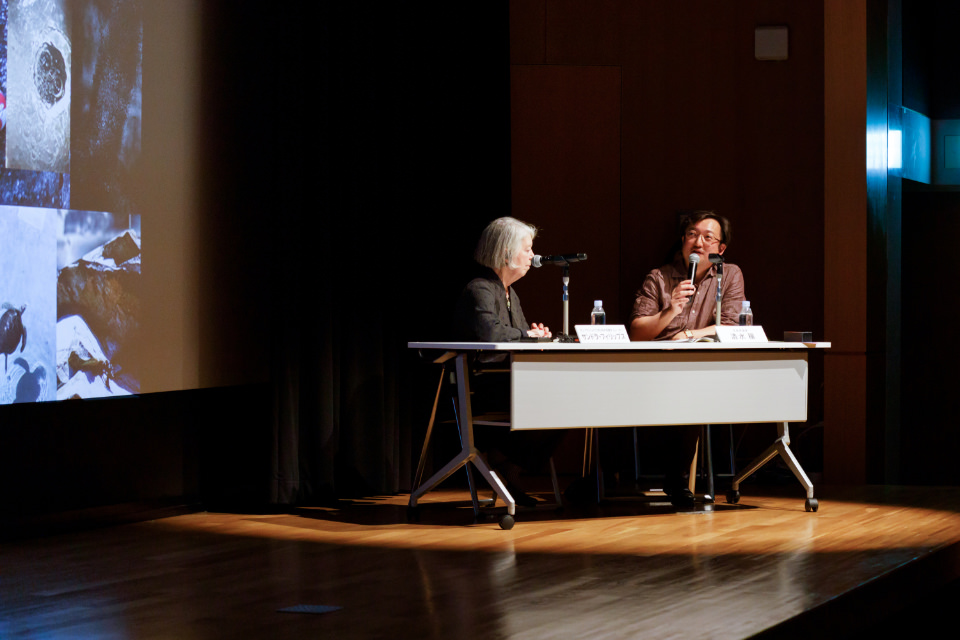

Shimuzu: There's a distinct gap in the quality of presentations from Japanese award winners versus those given by award winners from other countries. When it comes to making a presentation, Japanese artists tend to say some thing that's best left unsaid. They bring up some experience that's meaningful to them personally but of no interest to others — like, I grew up poor or I went on a walk with my daughter. I think this sort of extremely localized sensibility is what sets their presentations apart from those of award winners from other countries.
What did you think, Sandra, after hearing presentations from both Japanese artists and other countries' artists?
Sandra: I can't say whether or not there were definitive differences between Japanese photographers and other photographers. For me personally, however, I thought it was really important that Song-Nian Ang stood on the same stage with the Japanese photographers. I think it's good that they motivate each other in terms of photo techniques and other differences.
Shimizu: I agree it's odd to divide the conversation into Japan versus other countries. For example, Sajik Kim (winner of the 2016 Grand Prize) and Teppei Sako (winner of the 2015 Grand Prize) both gave very solid presentations that deeply impressed the judges.
There are, I think, some pros and cons to the presentation system. First of all is the disparity between the impressions you receive from the work and when you see the actual artist. For instance, I mistakenly thought Song-Nian Ang was a woman. So you can imagine I was taken aback when he wasn't. [laughs] And Kyosuke Sasaki, who took shots of Fukushima at night, surprised me by appearing in a totally original suit. So there can be a real discrepancy between the style of an artist's work and the artist's presence.
Another example of this discrepancy between the artist and the work is Susumu Okada and his work create new value, which you selected. His work conveyed a very delicate, tactile beauty to me. And yet Okada himself looked like an ex-rugby player turned salesman. He created images resembling gemstones by adjusting the focal point for each exposure and then combining multiple exposures into one final photo. I would have never guessed this without his explanation. And I understood his point that photos lack the dimension of size, and I appreciated the devotion he put into the principles of photography — the focal positions and how to adjust them inside a microscope. Nevertheless, his presentation felt somehow like a sped-up version of his personal history, when he should have addressed more objective aspects, such as his perceptions of the photographic medium's characteristics or the connections between the silicon in sand and the optical glass of photography.

Sandra: What I enjoyed about his talk was his story about going to the Grand Canyon and how it overwhelmed him. If you have been there, you will understand just how enormous that landscape is. It makes your own existence feel insignificant. But in Okada's case, his curiosity was captured by an insignificant crystal of sand. At the same time, the source of that sand is the canyon's gigantic boulders crumbling into grains of sand. That concept was very interesting to me.
Had Okada inserted that experience into his presentation, it would have made the presentation richer. Personally, I would have encouraged him to express more of the feelings going through his mind, something you could call meditative. What fascinated me about his work was that you could actually touch the tiny sand crystals with your hands, even as you looked up at these extremely magnified, abstract photos. I think he could have constructed an even larger, more attractive exhibit. Compared to the Grand Prize winner Song-Nian Ang though, Okada didn't fully realize what he was aiming for in his theme.
Shimizu: He said himself that he wanted to make the work so large that he would be swallowed into the picture. His expressions are yet not fully developed, but he gave a sense of his future potential.
I also think he is exploring something other than create new value. Rather, he is watching something with a timeless quality —geological time like the earth's existence that cares nothing about whether we humans are around or not. The Grand Canyon is a perfect example. The rocks literally hold hundreds of millions of years within them. Obviously, their timescale is not our human timescale.
When judging large numbers of submissions, you likely find two major tendencies. One is simply beauty in itself; in other words, considering photography in terms of its visual quality. The other tendency is conceptual — whether bitcoin or Fukushima or the prevailing socially engaged art trend — where the story or the context is considered the primary subject. These tendencies are headed to opposite extremes. The one extreme — purely visual beauty — is in jeopardy and likely has no place in contemporary art or photography today. At the other extreme is downloading some rather boring photos, slapping the caption “Fukushima” on them, and calling it your art. This is so far removed from photography that the words accompanying the photos overpower the photos themselves. Because these works are easy to put into words, they delight many people, including critics, but works that do no more than this are tedious at best. Finding a balance between these two extremes is what makes judging difficult.
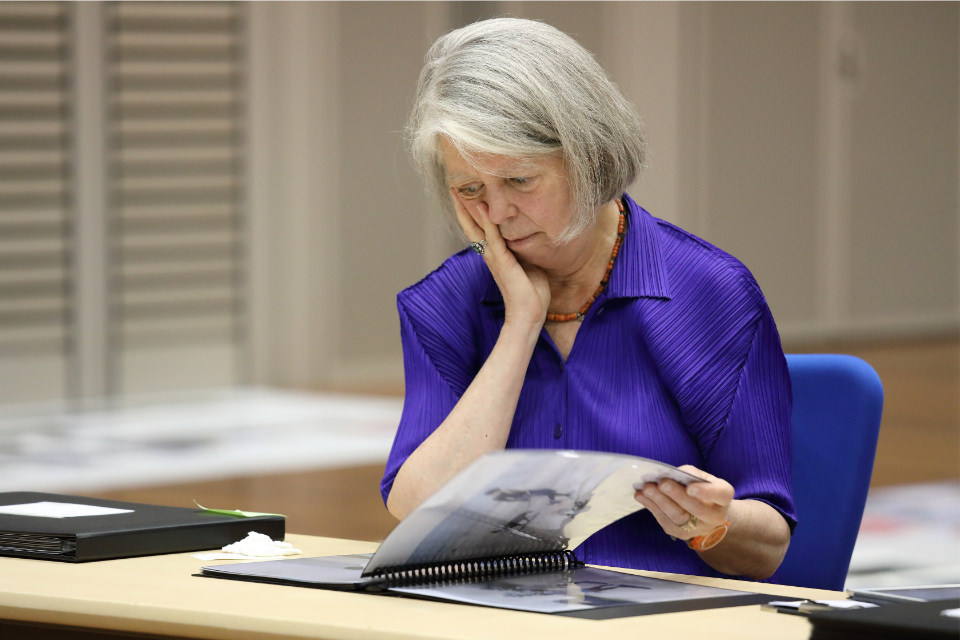
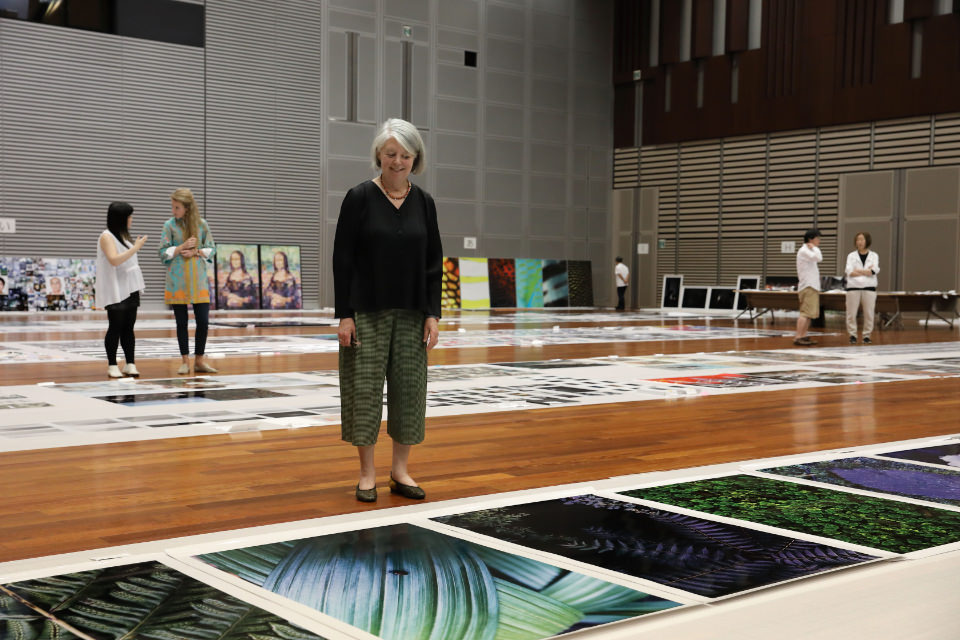
Shimuzu: What are your thoughts on the trend toward socially engaged art?
Sandra: Socially engaged art has a very long and ongoing tradition, and I think it is a very powerful movement. I believe photography is a medium well suited to socially engaged art.
An example in the West is the photographic cooperative Magnum Photos. It was founded by the photographer Henri Cartier-Bresson and others. He was very engaged with the world and with his surroundings. Magnum is a thriving organization and a huge part of contemporary photography.
Looking at the economics of photography, it's hard for a socially engaged photographer to make a living. Magazines today provide little support for this form of photography. This is why so many photographers have turned to social media and sell their work in their own galleries. This direction feels somehow wrong to me. But I do think it's pragmatic. Because these photographers have to make a living on their own and they have to support themselves.
Shimuzu: With Bruce Davidson, or even Eugene Smith's Minamata, the main focus was the documentary. Take, for example, a theme like the disappearing apple orchards on the outskirts of London and the simultaneous disappearance of good old-fashioned communion between people and nature. A theme like this would ordinarily be turned into a six-page feature story in some magazine like Life with the title “The Disappearing London Burbs”. And here you have someone going to the trouble to hollow out apples and turn them into pinhole cameras.
There are probably two things you can say about this.
The first is that true reality and documentary subjects can no longer depend on Magnum-ish expressions. What I mean by this is that Magnum and other similar battlefield photography has been subsumed as just another style. And recognizing this fact, young photographers reject it and are trying an alternative.
The second thing is, as you just mentioned, these photographers no longer have places to earn money and wind up hawking their work in art galleries. However, I can't help but regard this as a perverse practice; all I see are people making money off the misfortunes of others. Their work makes me feel nothing but ambivalence.
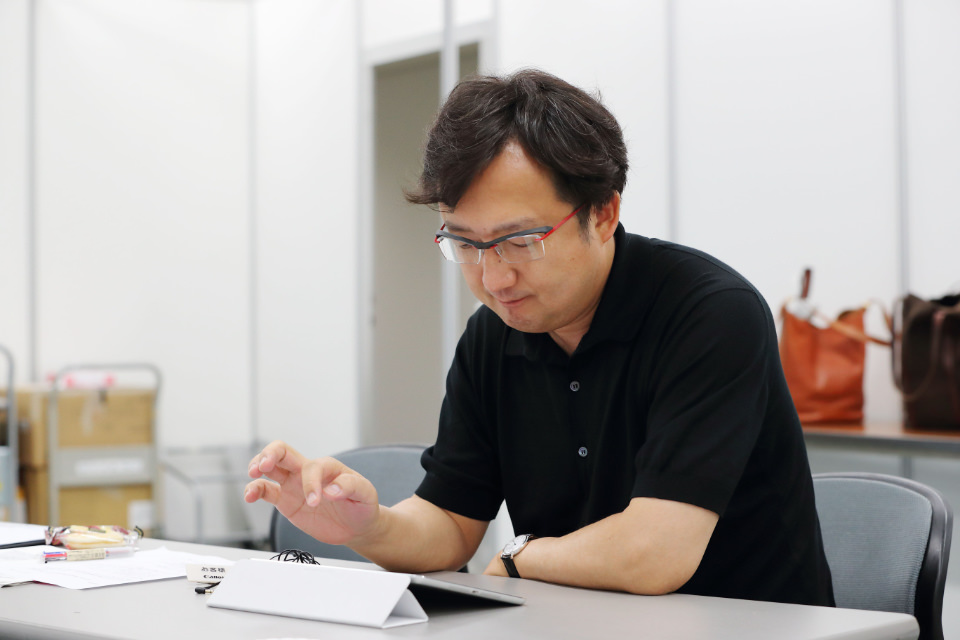
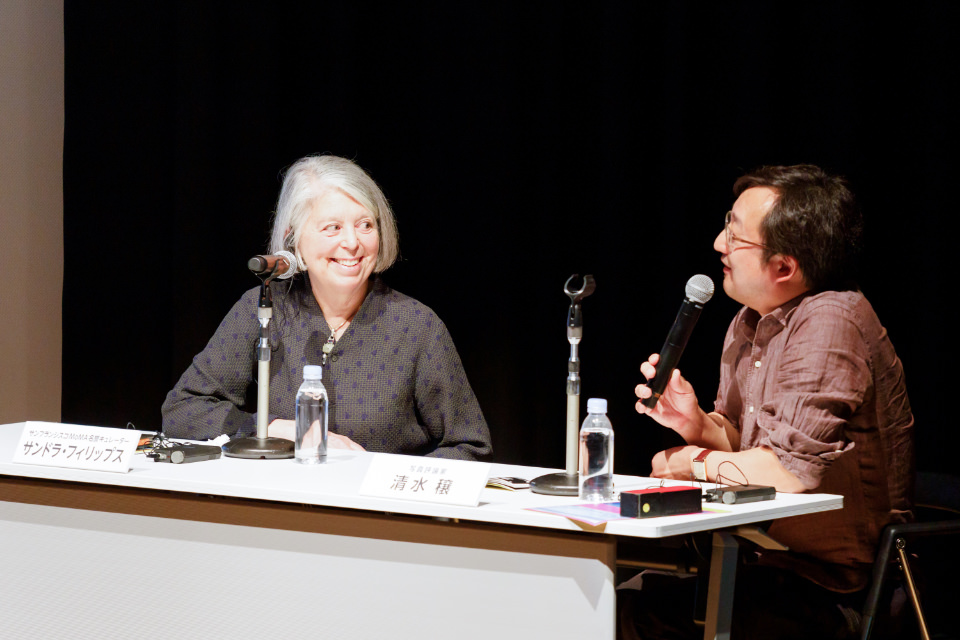
Sandra: Let's look at the historical context. Besides Eugene Smith's Minamata, in the 1960s you had the New Documents exhibition showcasing the work of Garry Winogrand, Lee Friedlander, and Diane Arbus. John Szarkowski invented the term itself, but the movement opened up a new form of documentary photography. It didn't solve any issues and it didn't make the world a better place, but the photographs did construct the structure of saying what should be said. That's how that market came into existence.
There are two layers to how the market has evolved because this sort of photography was deemed to be art. First, the conventional uses of traditional photographs namely, being used in magazines dried up and an apolitical tradition evolved in the 1960s. Photographs were shown in galleries like art objects starting in the 1970s
There is also the tradition of documentary photography. But almost all of this was anti-political, or when it was political, it had a subtle, personal dimension. In other words, documentary photography did not take on subjects of policy or government or Middle East politics.
We are in a very strange situation now. Photographers called artists have emerged, and the question is how their work is to be supported other than by selling it as art.
Shimizu: I think wanting to support such works in some way is what leads to attempts, like Unseen, to produce a system that is somewhat alternative and yet economically grounded.
I also want to mention the massive expansion in creative photo expressions. One recent trend among entrants, such as Hana Sawada (winner of a 2017 Excellence Award), is downloading images circulating online, processing and arranging them somehow, and turning them into a work. We are already seeing entrants who don't take any photos at all.
Do you have any premonitions or misgivings about the new photographic expressions digital technology will make possible in the future? Every camera today has a movie function. Not only that, it has a clock function and even works as a telephone. Because the very distinction between still images and movies is dissolving, the New Cosmos of Photography decided to stop differentiating between still images and movies. Which is unfortunate in my view. Almost all the submissions are, sadly, uninteresting short films so far. Nevertheless, what it is hoping for and has started progressing toward is in-between expressions: neither photographs nor videos but both at the same time — that is, works in which digital technology perfectly blurs past distinctions between still images and movies.
Sandra: I think the New Cosmos of Photography is very open-minded in its approach of accepting all forms of photographic expression. My problem is having to choose from all the expressions. I work in a museum. How do I judge what is good or what deserves to be shown in as art? It's extremely hard to select pieces and ascertain whether the general audience will take an interest in them.
Technology is constantly evolving. It feels like technology has taken over the world. It's a good thing that the manufacturers who provide the technology have made it as easy as possible, and in as fun a way as possible, for photographers to create many photographs. But it has made it much more demanding for us in the opposite side. It's tough for us as judge to figure out how to make decisions about these photographs. However, besides me, there are people in general who see and think and choose from so many things. We deal with the most democratic medium. Anyone can create a photograph. To be blunt, even a monkey can take a photograph. So from this multitude, which do we choose, how do we choose, and why do we choose? This challenges us to reflect on the reasons behind our choices.

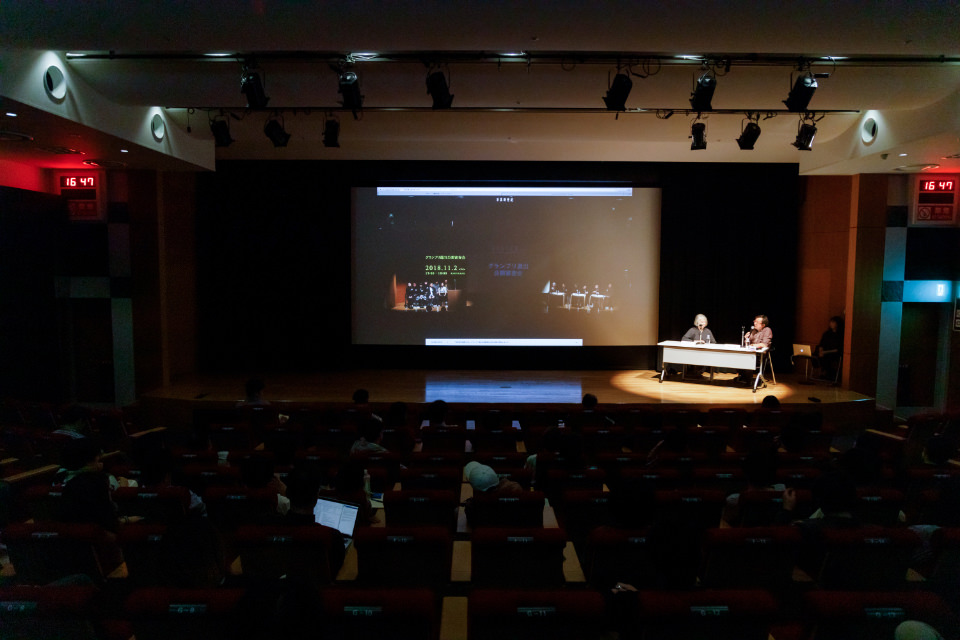
Sandra S. Phillips is Curator Emerita of Photography at the San Francisco Museum of Modern Art. She has been with the museum since 1987, and assumed the position of Senior Curator in 1999. In 2017 she assumed the position of Curator Emerita. Phillips has organized numerous critically acclaimed exhibitions of modern and contemporary photography.
Since 1995, Minoru Shimizu has developed his work as a critic focusing on modern art, photography, and modern music, and he has contributed essays and commentary to exhibition catalogs and photo collections in Japan and abroad. In recognition of his work, he received the Shigemorikoen Photo Criticism Award for his 1995 publication The Photographic Invisible: James Welling (Wako Works of Art, 1995). Some of his major books include Shashin to Hibi [Days with Photographs] (Gendai Shichoshinsha, 2006), Hibi Kore Shashin [Daily Photographs] (Gendai Shichoshinsha, 2009), and Pluramon (Gendai Shichoshinsha, 2011). Currently, he serves as a professor at the Faculty of Global and Regional Studies at Doshisha University.